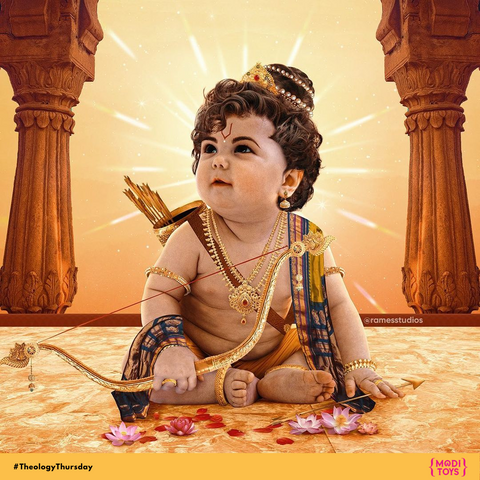A Look Behind the Ram Mandir in Ayodhya & the Story of Ram Navami
With the upcoming consecration ceremony of the Shri Ram Janmabhoomi Mandir in Ayodhya, we're taking a closer look at both the temple and the birth of Lord Ram, whom it commemorates.
The Mandir's Full Name:
- Shri = respectful honorific prefix
- Ram = 7th avatar of Vishnu, the preserver god in the Hindu trinity. (Sometimes spelled Rama)
- Janmabhoomi = place of birth; this temple is built in Ram’s place of birth & where he ruled the kingdom
- Teerth = sacred place; pilgrimage site
- Kshetra = temple
A Contentious History
- Pre-1528: The existence of a Hindu temple is a hotly contested issue, fueled by historical, archaeological, and religious interpretations
- 1528: The Babri Masjid was built during the reign of the Mughal emperor Babur
- 1992: The Babri Masjid was demolished, resulting in violence and thousands of deaths in India
- 2024: After decade long court disputes over this holy land, the new Ram Mandir opens to the public
- TBD: The court allocated separate land for a new mosque, but there’s no definite timeline for its construction
Construction of Ram Mandir
- Style - Designed in traditional Nagar architectural style, which are built on a rectangular plane surrounded by small towe
- Architects - Designed by the Sompuras, a family of 15 generations of architects responsible for over a 100 temples in India and abroads
- Deities - The smaller surrounding temples will also house Sita, Lakshman, Hanuman, Ganesh, Shiva, and Surya Dev amongst other deities



Once upon a time, there was a loving king named Dashrath who lived in Ayodhya.
He had three wives named Kaushalya, Kaikeyi and Sumitra. Despite having everything a King could hope for, he had a lingering sadness...
He pined to become a father.
King Dashrath asked a priest to come over his palace to perform a ceremony to help him heir a child. At the end of the ceremony, a divine being rose from the holy fire, holding a vessel in his hands.
King Dashrath was instructed to distribute the vessel's contents among his three wives.
He gave half of it to Kaushalya,
one fourth to Sumitra and
one eighth to Kaikeyi.
However, there still was some leftover so he gave it again to Sumitra.
The "magic potion" worked.
All three wives were expecting.
Kausalya gave birth to a son named Ram.
Kaikeyi gave birth to Bharata.
Sumitra gave birth to twins, Lakshmana and Shatrughna.

The story of Ram Navami:
What?
Ram Navami is the celebration of Ram's birth.
Ram is the seventh incarnation of Lord Vishnu. (Krishna is the eighth).
FUN FACT: The same magic potion that was responsible for the birth of Ram, was also responsible for the birth of Hanuman.
Vayu, the God of Wind, flew a drop of it into Hanuman's mother's mouth.
When?
Since it follows the lunar calendar, it typically falls in March or April. In 2024, it’s on April 17.
Where?
Primarily celebrated by Hindu communities globally, particularly those following Vaishnavism
Why?
To commemorate Lord Ram, who is seen as an ideal figure embodying virtues like truth, courage, righteousness, and devotion to duty.
Ways to Celebrate Ram Navami:
There are many ways to celebrate Ram Navami. Reciting mantras such as "Sri Rama Jaya Rama Jaya Jaya Rama" will help bring prosperity. Reading stories about Lord Rama and keeping him in your mind also is a way to celebrate. You can also go to your local temple's festival where you can worship Lord Rama with others.
Enjoyed this article?
Follow us on Youtube & Instagram to view our weekly Theology Thursday posts!
Modi Toys is a children's brand of toys and books inspired by ancient Hindu culture. We exist to spread joy and to spark curiosity in the next generation through our innovative soft plush toys, illustrated children's books and free learning resources. Our weekly Theology Thursday series covers a wide range of topics rooted in Hinduism to help us better understand the origins of traditions, the symbolic meaning of rituals, and the stories behind Hindu holidays and festivals. The more we can understand "the why" behind this 4,000 year ancient religion, and make sense of it in this modern age, the greater we can appreciate and preserve our rich Hindu culture. While we take great care in thoroughly researching the information presented, we may occasionally get some things wrong. We encourage a healthy and open dialogue so we can learn together. Please leave a comment below or email us directly at support@moditoys.com to address any concerns.


